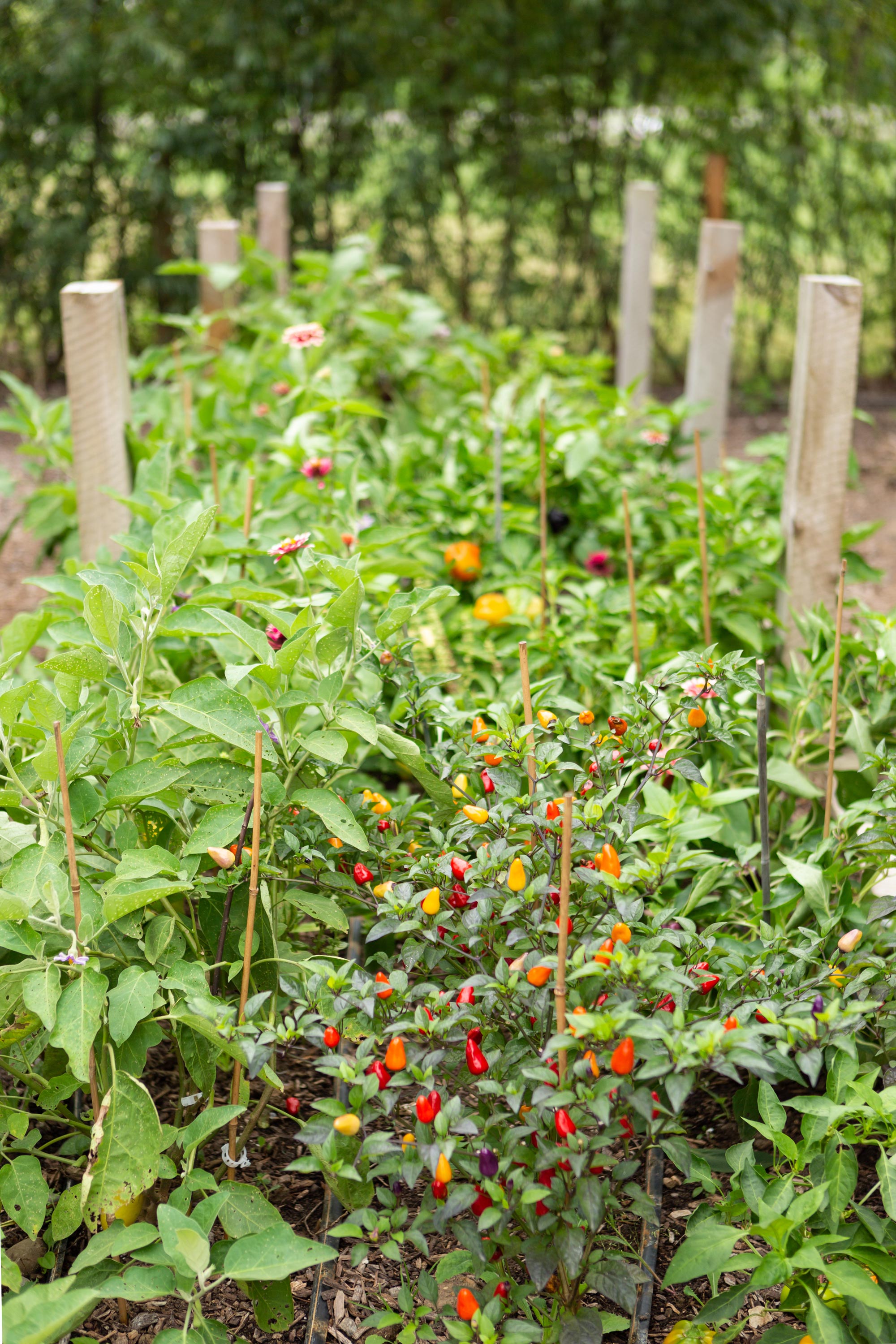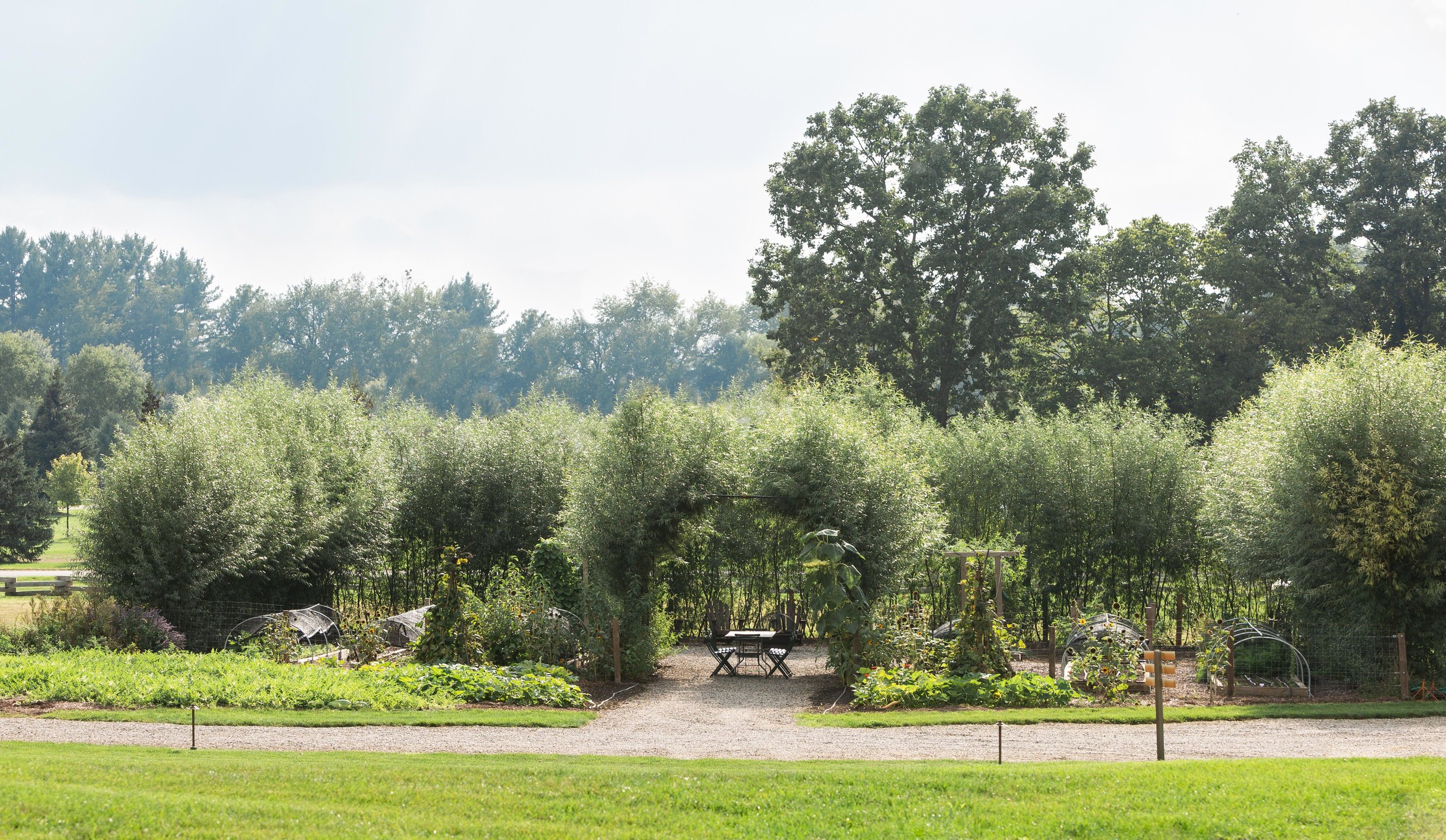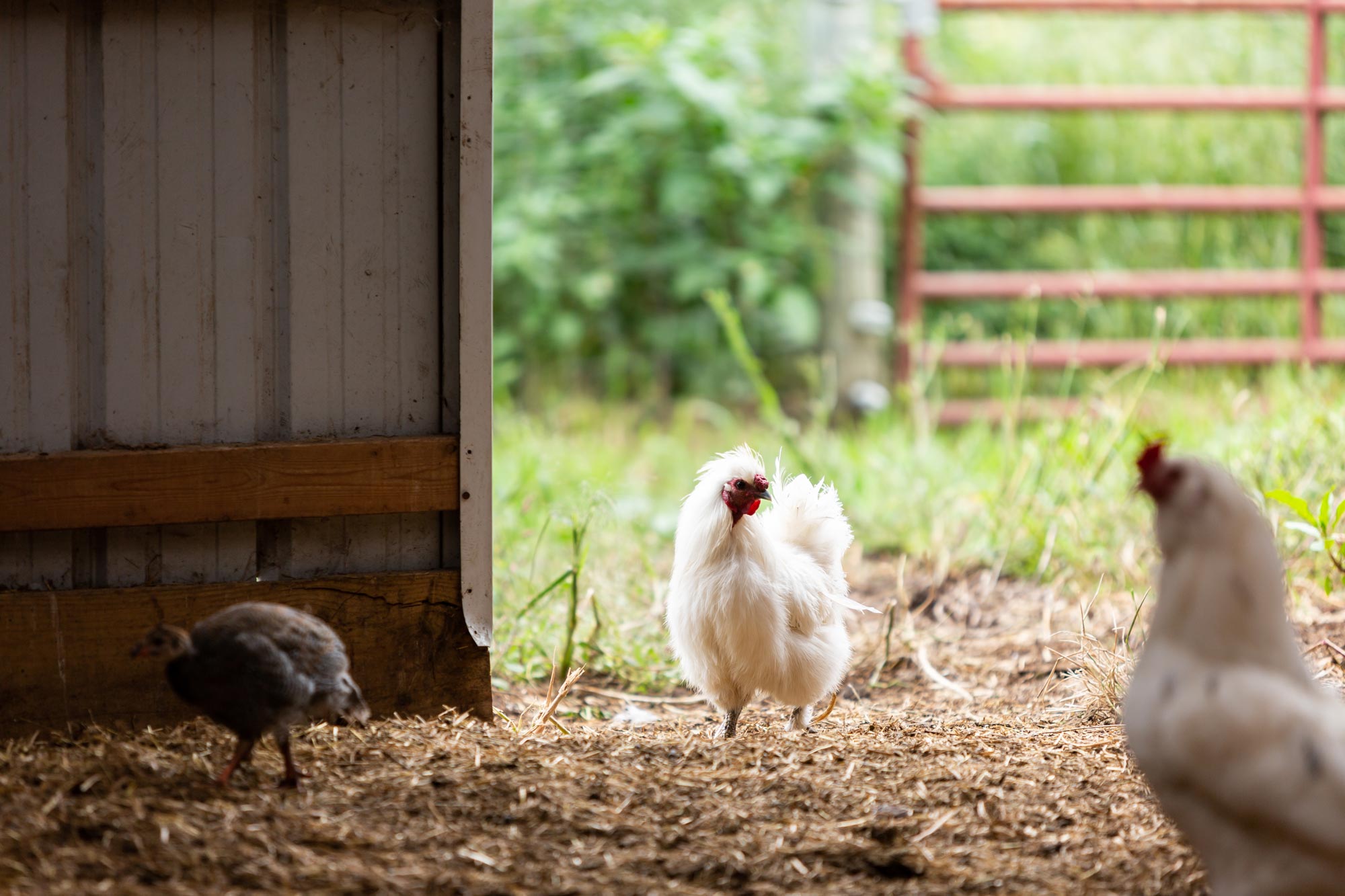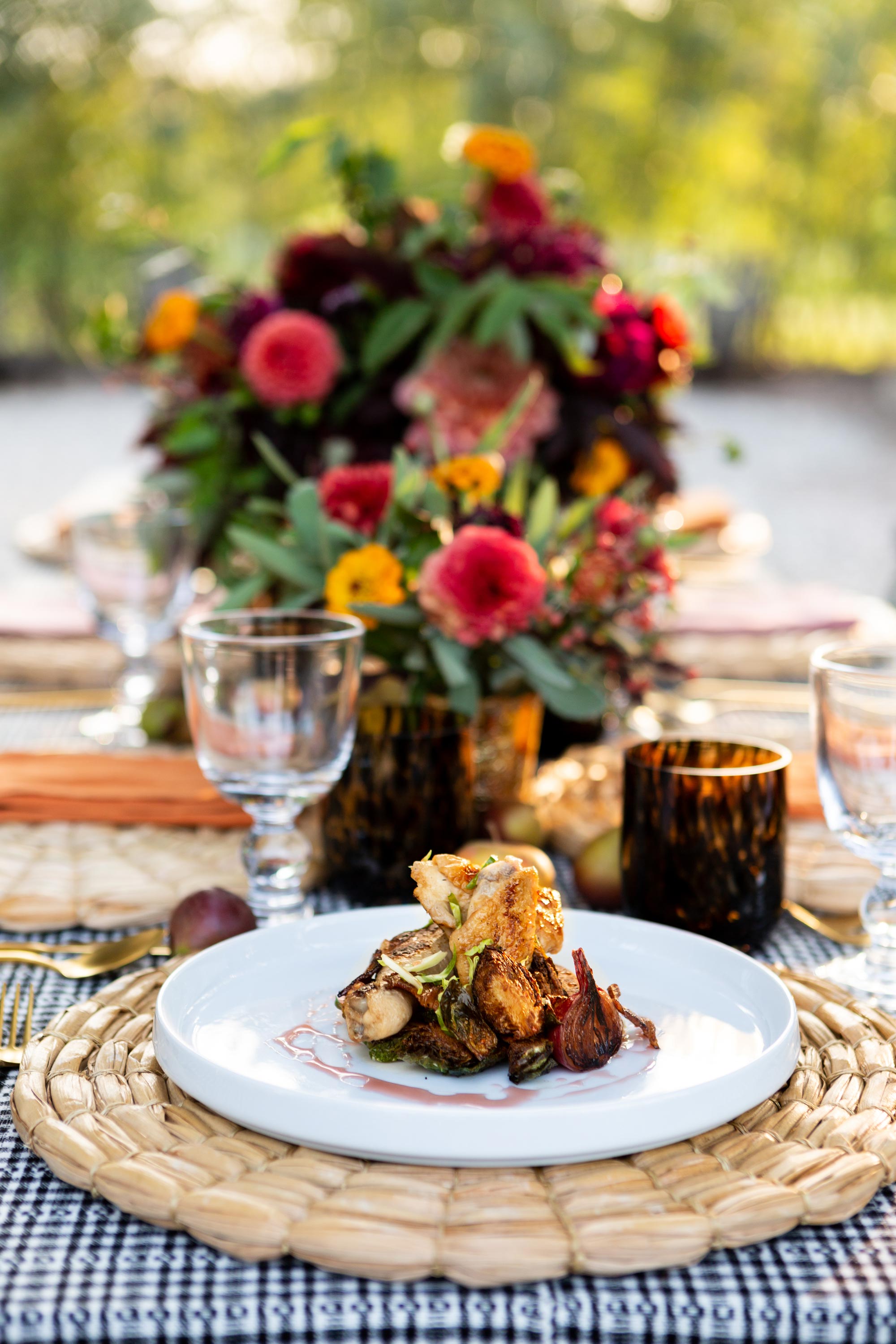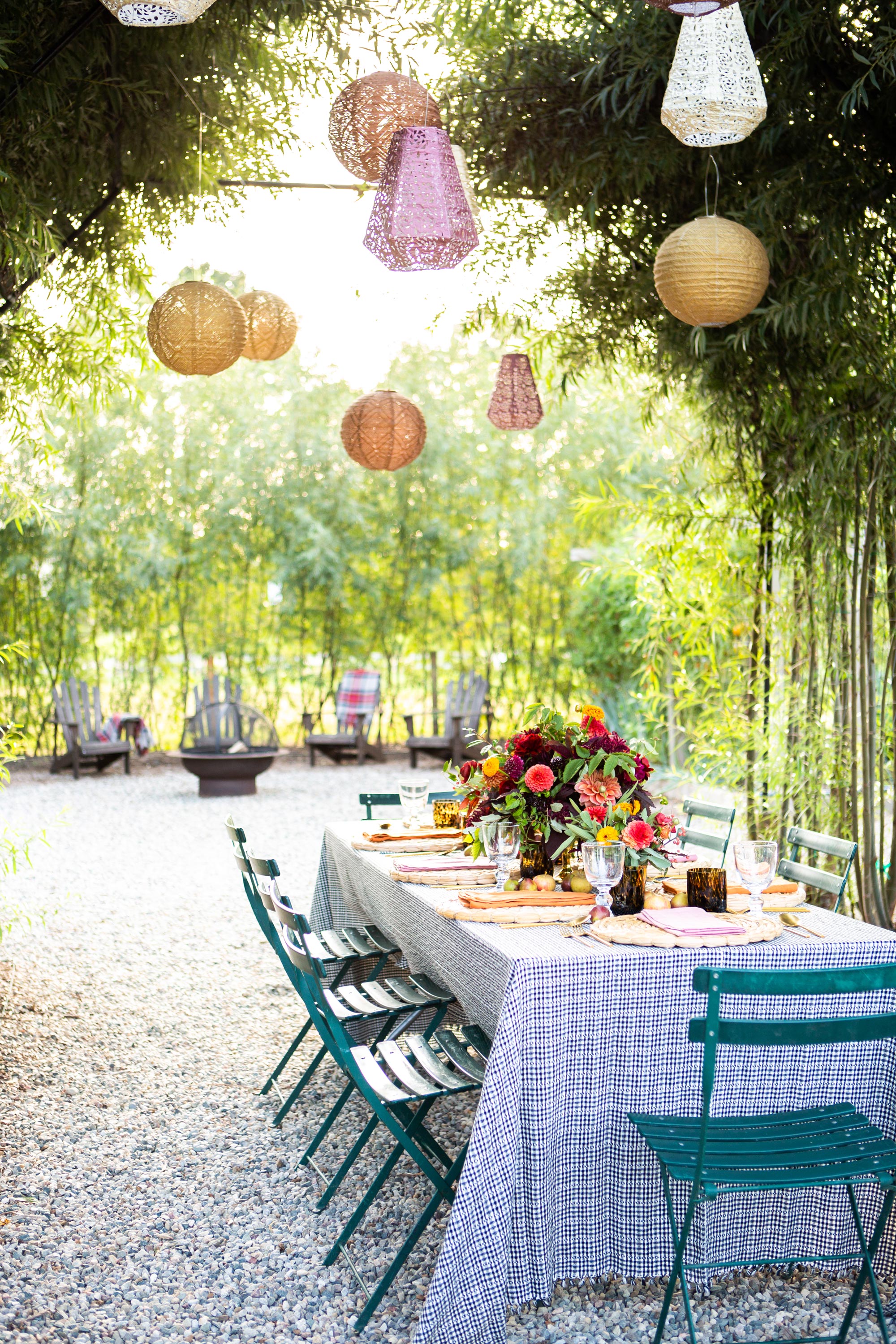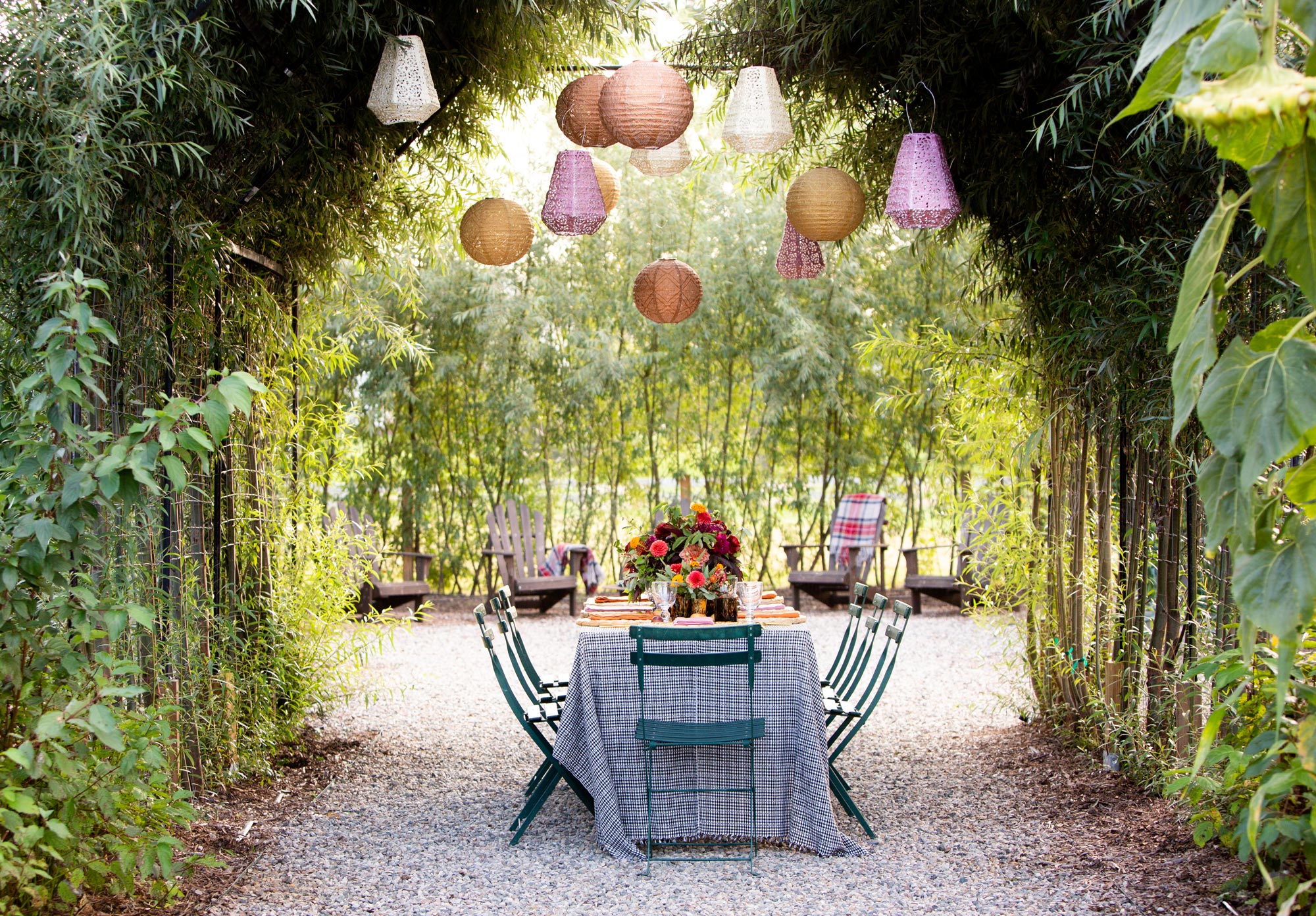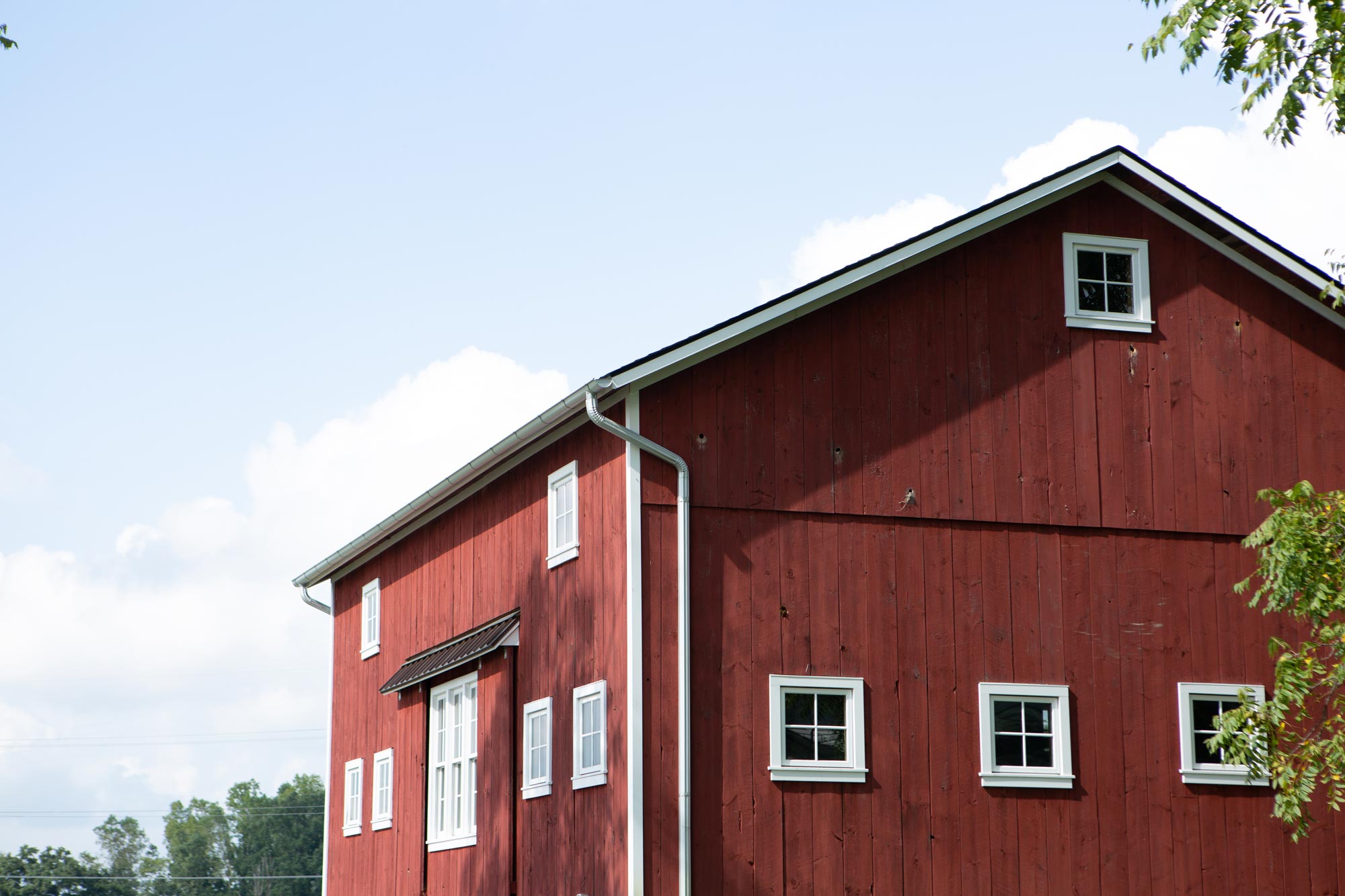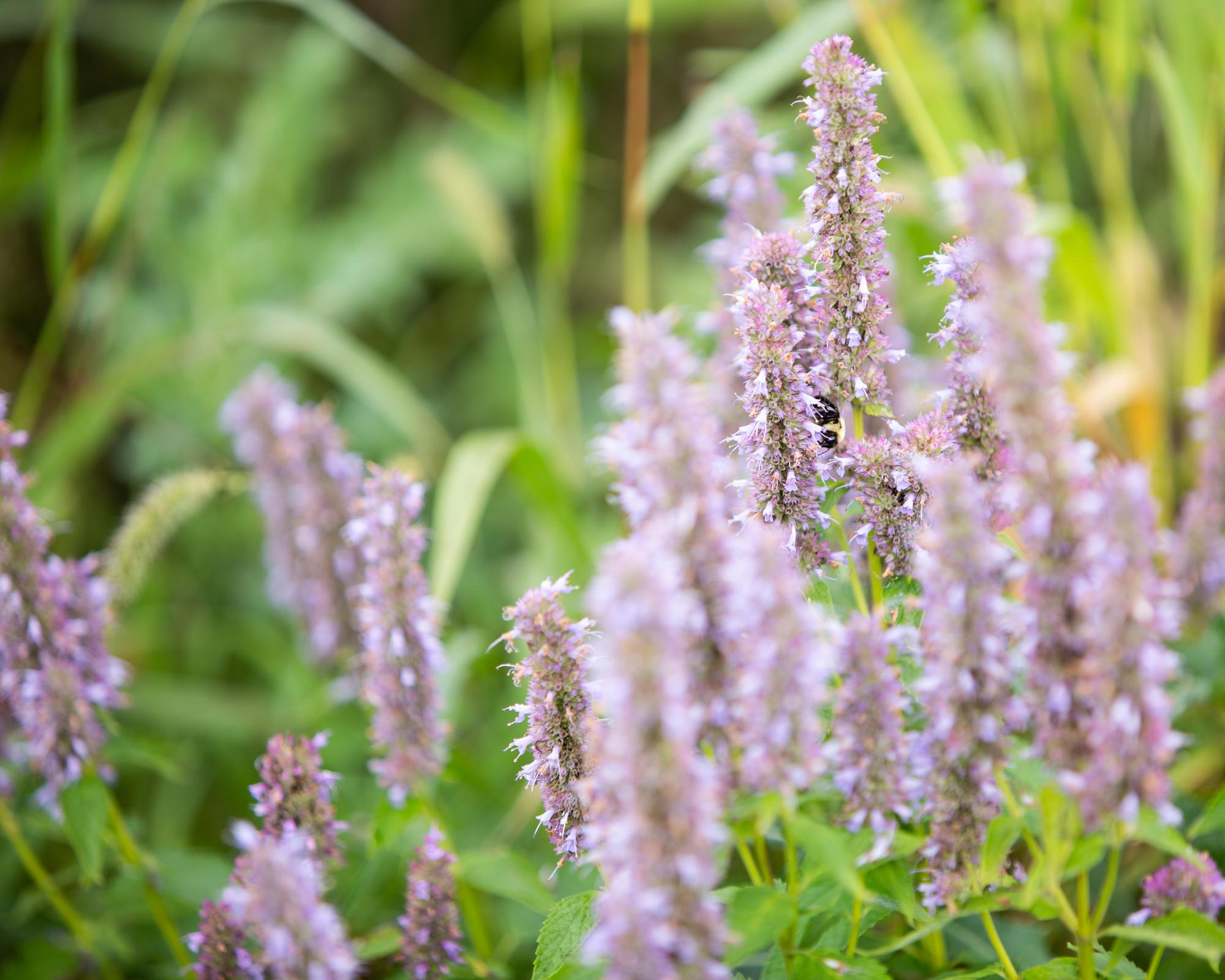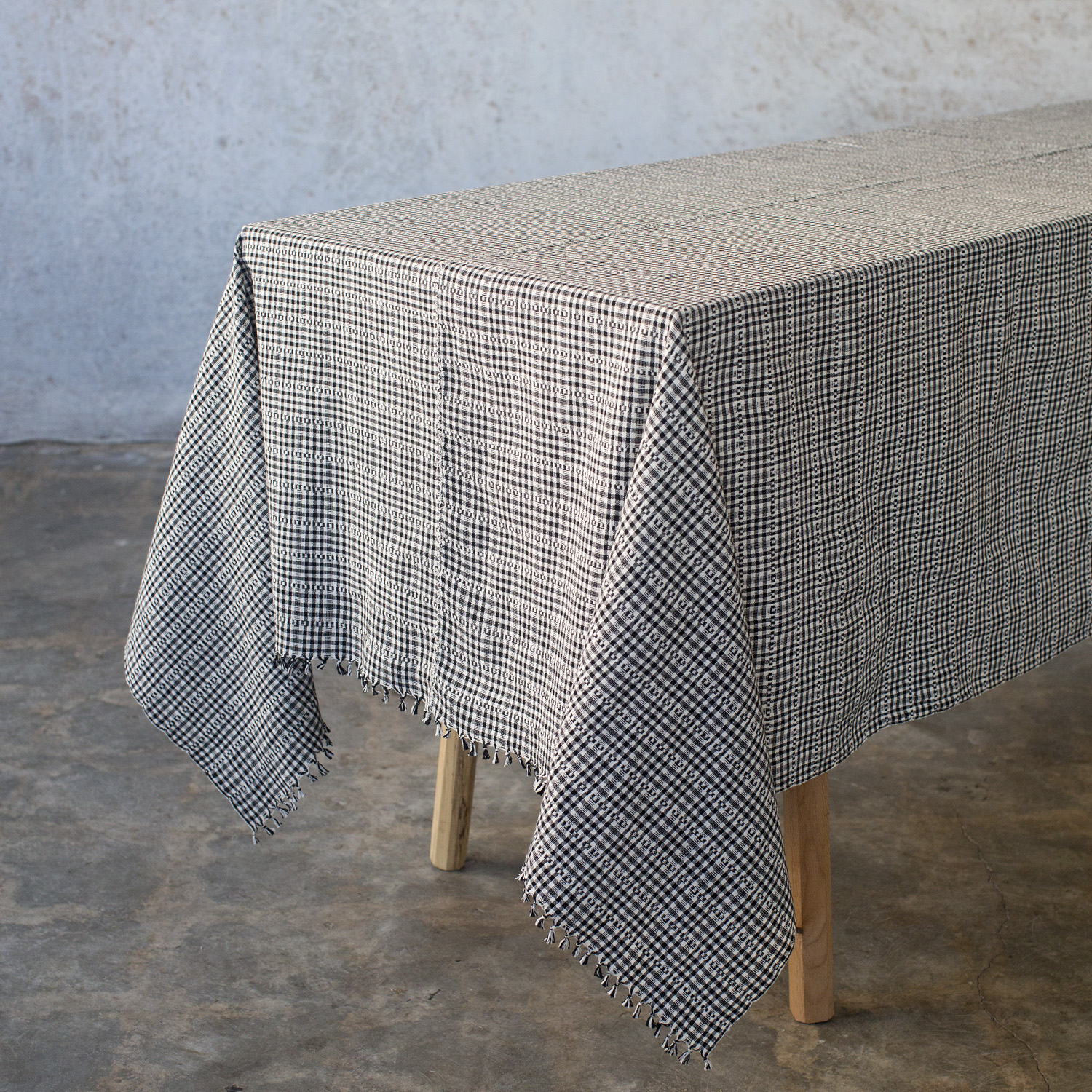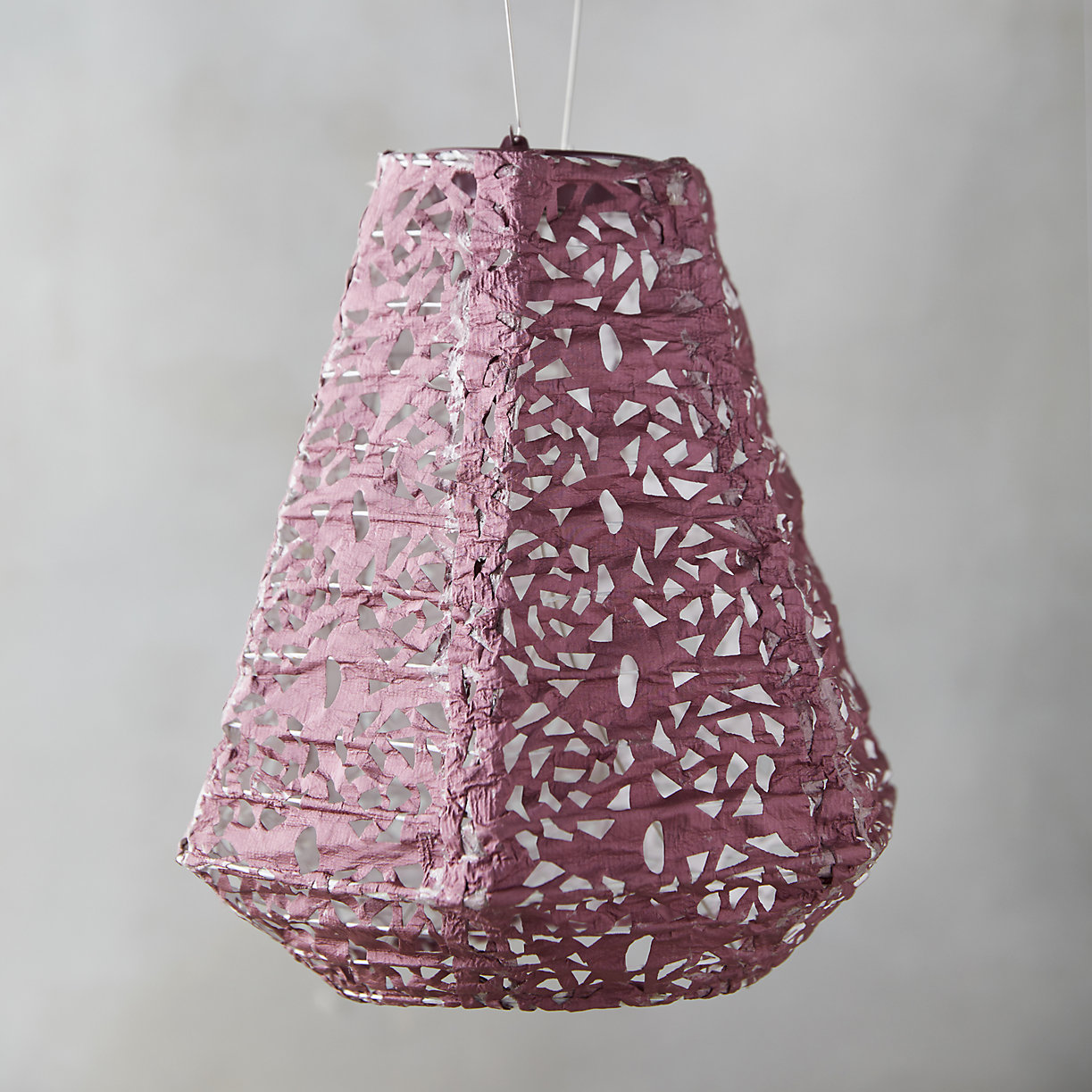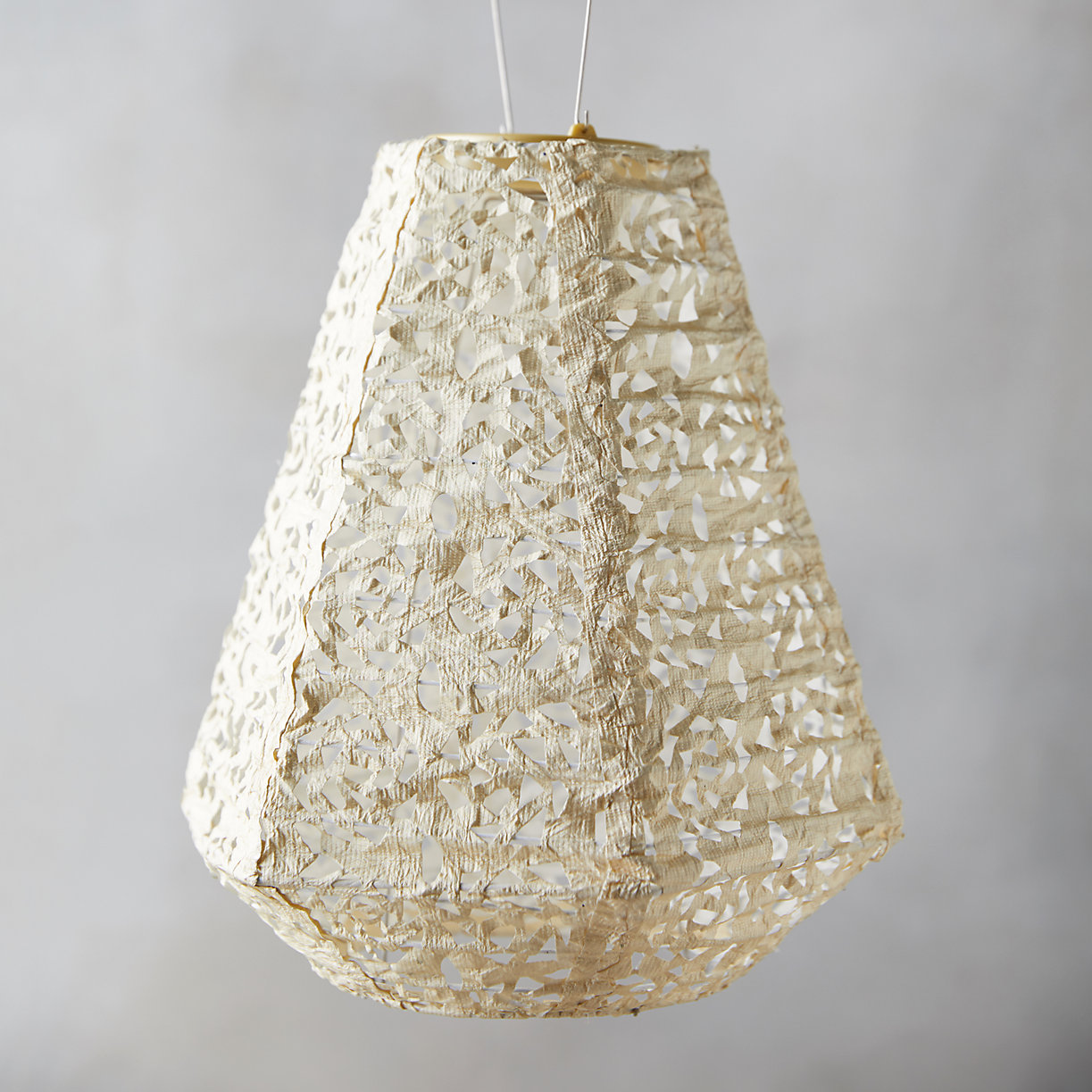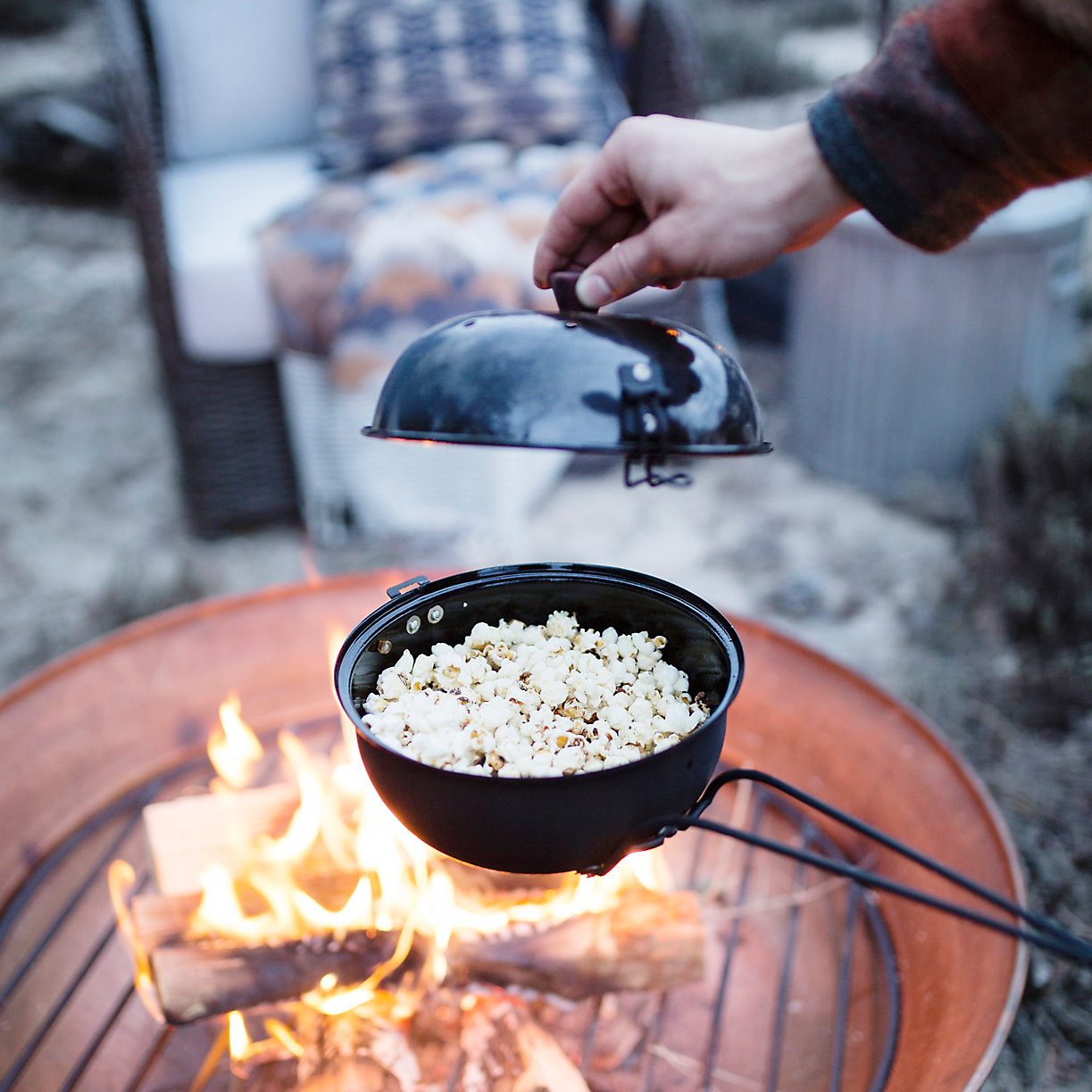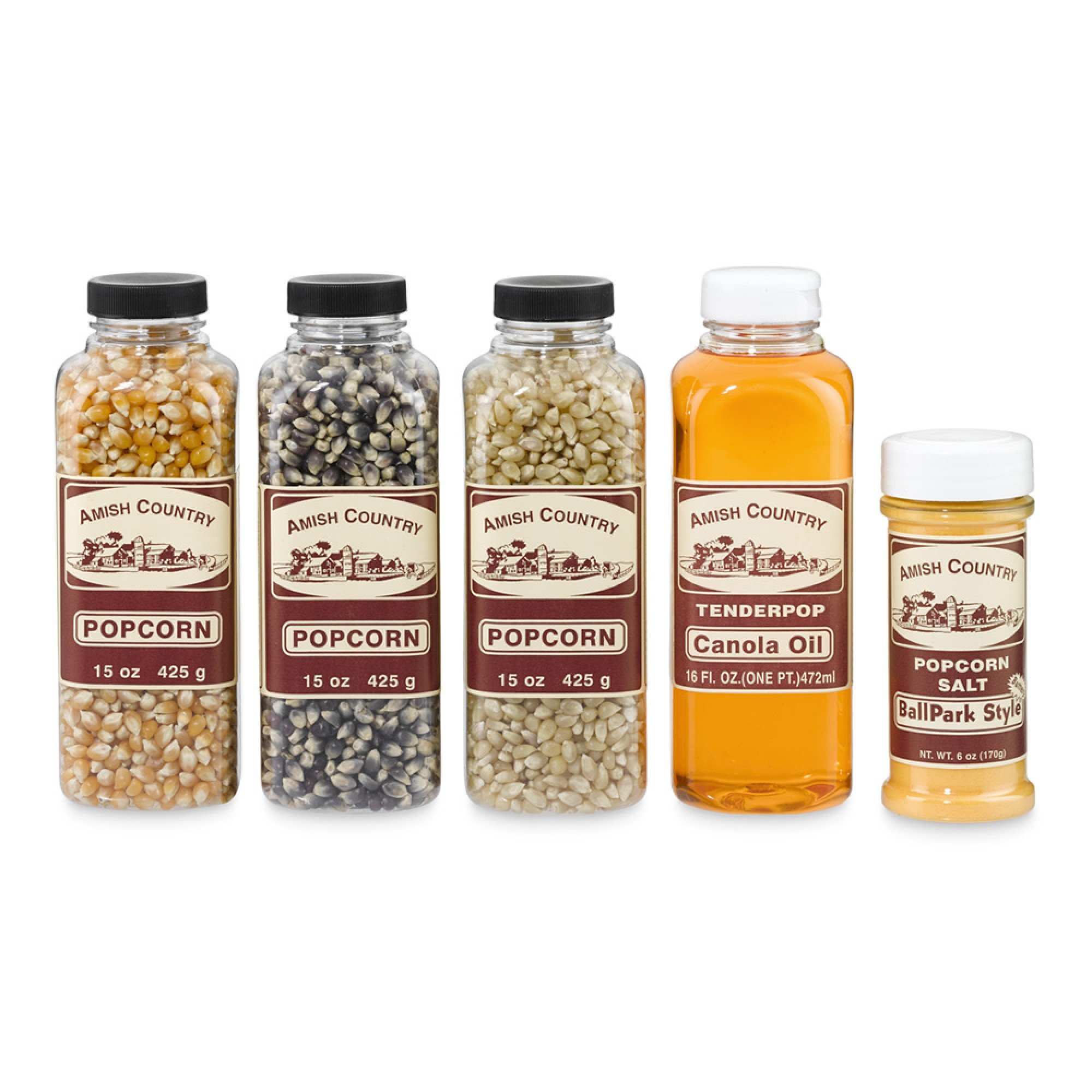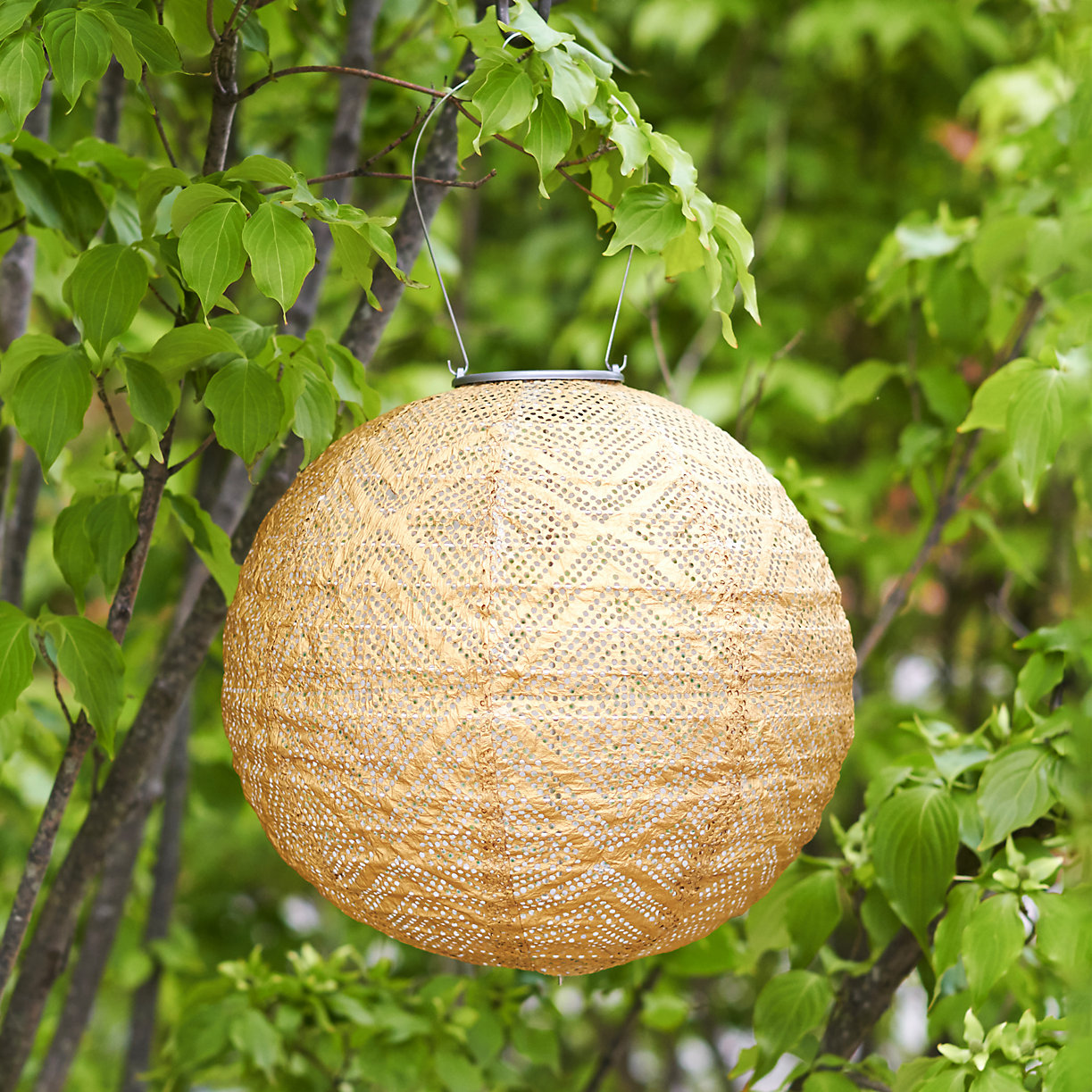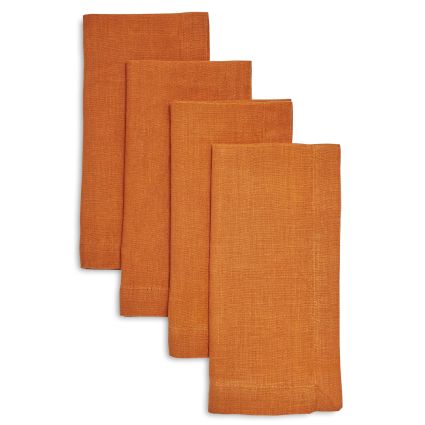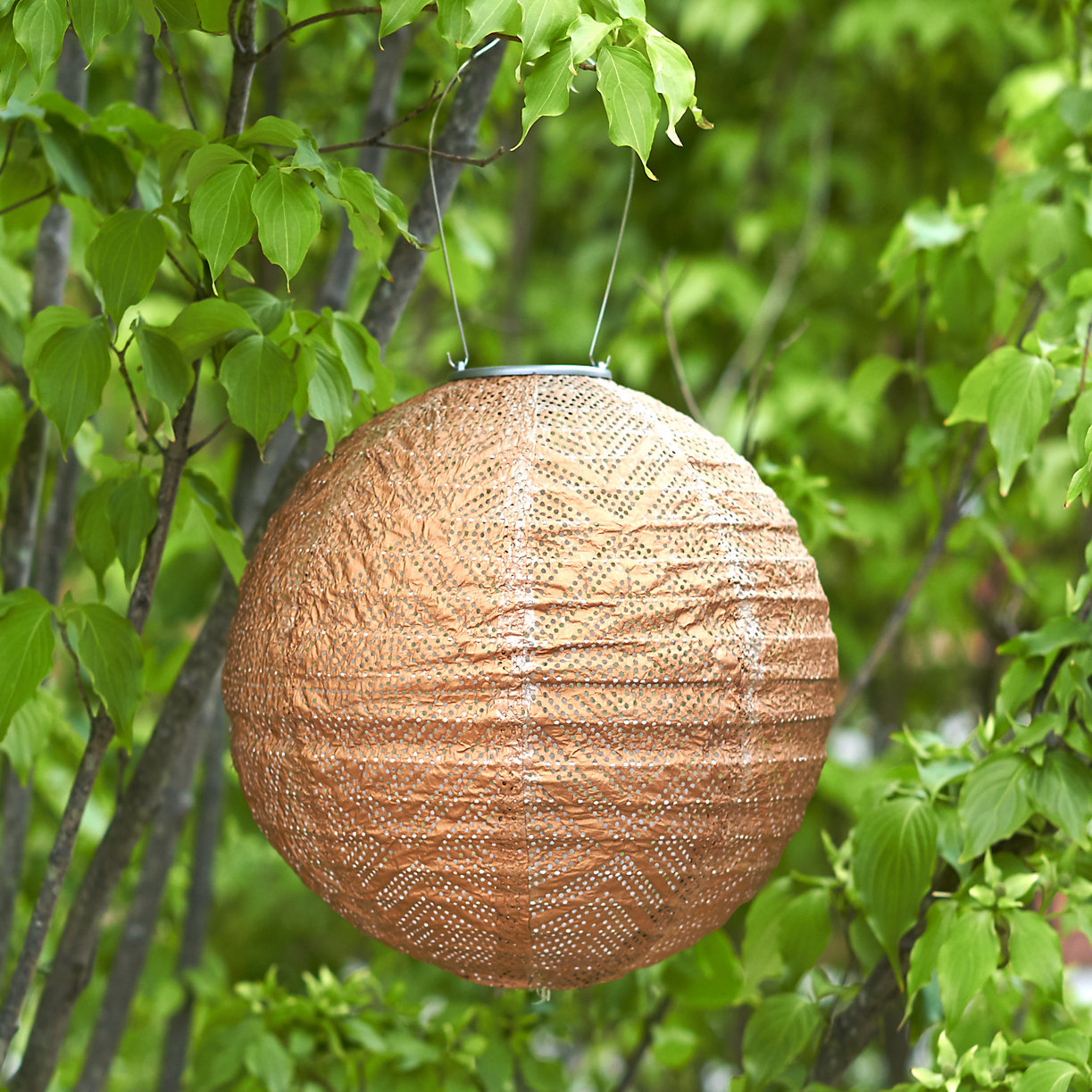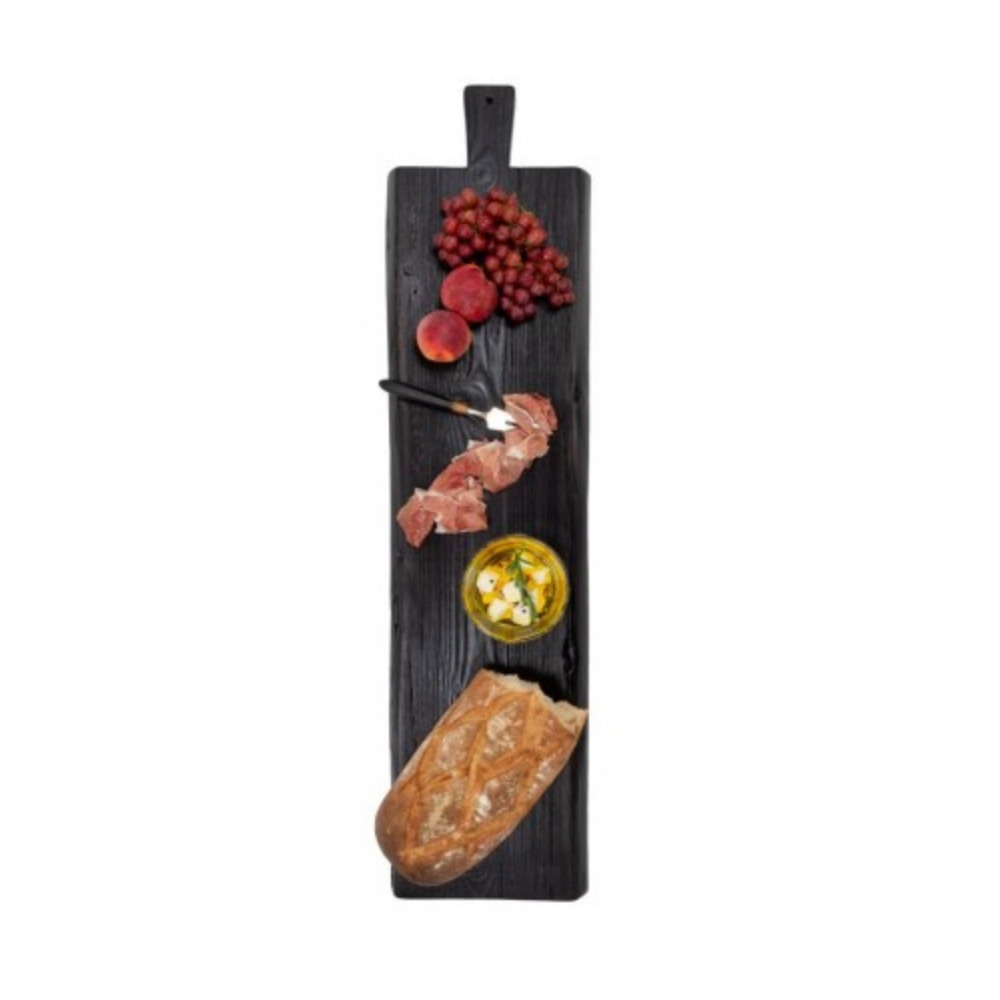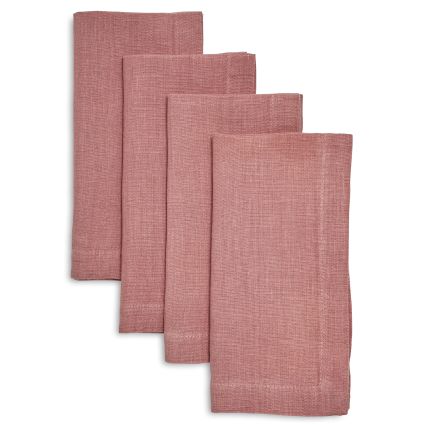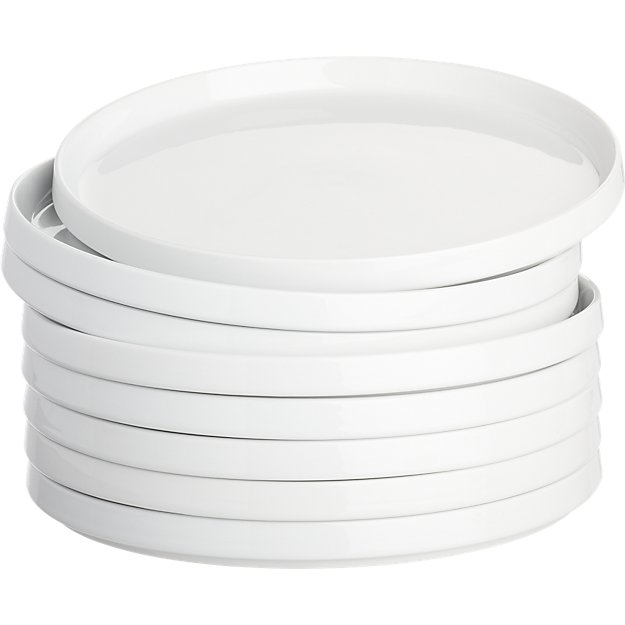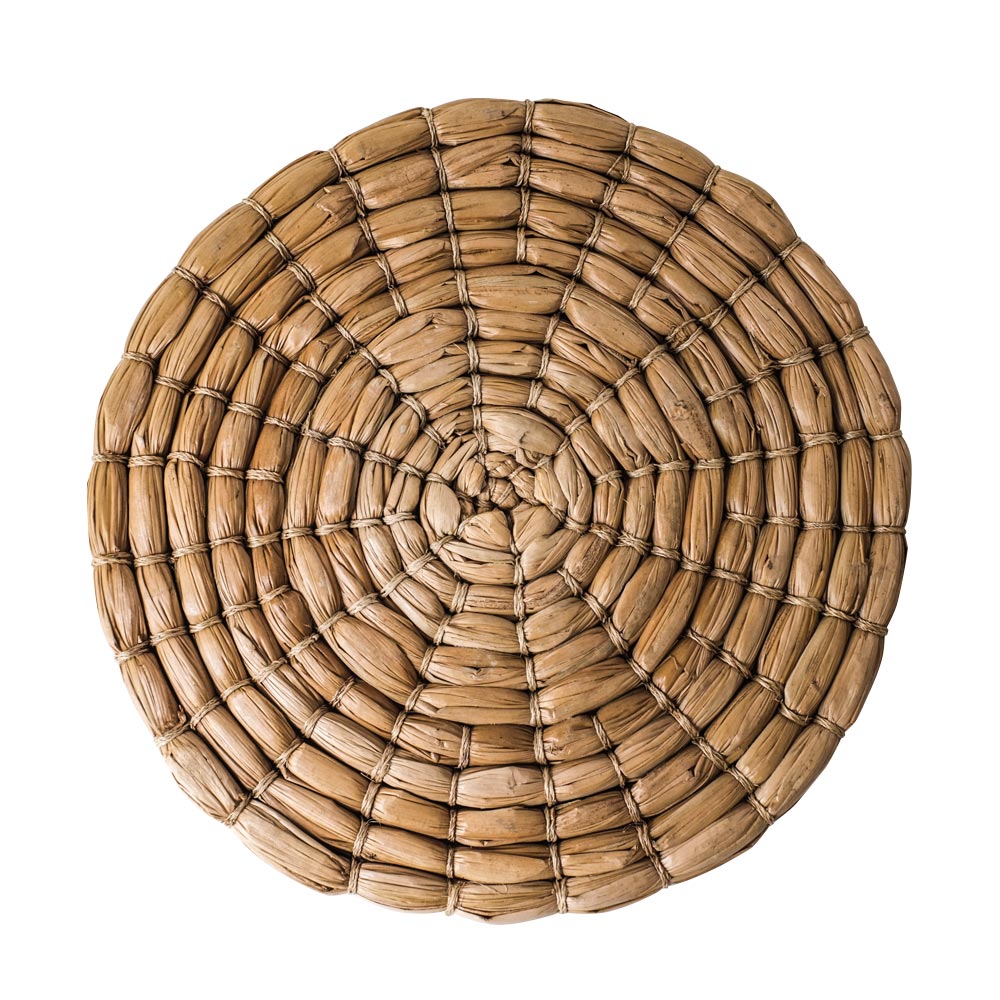Zingerman’s Cornman Farms: Four Courses in the Chef’s Garden

Written by S. Pajot | Photographed by Marta Xochilt Perez | Produced and Art Directed by Michelle Adams | Video by Jon Kopacz
Our product recommendations may include items from our sponsors and/or contain affiliate links, which means we may earn a commission when purchases are made. Rest assured, every item is genuinely chosen by our editorial team.
In the shade of wispy willows, the table is set. Green cafe chairs are pulled up. The crudités are cut. And the cork on a bottle of Grochau Cellars 2013 Pinot Noir is popped.
Welcome to Zingerman’s Cornman Farms, a rambling, rustic, 42-acre event space and working farm in Dexter, Michigan, that’s home to honeybees, a thriving flock of chickens, two mischievous goats named Bad Brad and Reese’s, and a complete culinary staff. There is a restored 181-year-old red barn where wedding ceremonies are held, a gleaming white farmhouse where nearly all of the cooking is done, and a half-acre plot of verdant land—affectionately known around the farm as “our secret garden”—where much of the kitchen’s organic veggies are grown.
Cornman’s farmhouse, home to the chef’s kitchen.
The host, as always, is Kieron Hales, Cornman’s chef and co-owner, an oft-suspendered, hat-loving, joke-making Englishman who’s been “cheffing,” as he likes to say, since he was 13 years old. Trained in England and France as part of a culinary apprenticeship based out of Bournemouth & Poole College, Hales still marvels that he “started in a one-Michelin-star restaurant off the bat.”
It’s about trying to find the real stories around the food, rather than just being able to cook well.
From there, he says: “I got passed around by a bunch of chefs. And I’ve lived in 27 different countries. That’s the weirdness of my life.” He even worked, early on, for Paul Bocuse, the late nouvelle cuisine legend. “It was a life-changing experience,” he confides. “His restaurant is probably the most magical place I’ve been. It changed the way that I wanted to cook in the sense that it was not about froufrou pretty plates; it was about perfectly cooked food done right, and done right the first time. That is where I’ve stayed all of my life.”
Dinner is about to be served: Sur La Table napkins and seagrass place mats top a Heather Taylor Home tablecloth; they’re surrounded by Williams Sonoma wineglasses, and CB2 tortoiseshell tumblers and gold flatware.
At Cornman, Hales continues to pluck his best ideas from classic European culinary traditions. “A lot of old, historic recipes really get me excited,” he says. And his greatest resource lies stacked on the farmhouse’s shelves. “My mother had an amazing cookery book collection, and when she passed away recently, I managed to get hers with mine,” he says. “I’ve got about eight and a half thousand cookbooks here.”
On this day, he has just recently completed the latest Zingerman’s Cornman Farms seasonal menu. (“My process? I wander through my cookbook collection like a madman.”) And now, it’s finally time for an amuse-bouche, along with several other courses, in the secret garden. Dressed in his bucolic chef’s best, Hales implores his guests: “Eat up, mes amis!”
“Chefs like to be impulsive and last-minute, but when you’ve got to grab your ingredients out of the garden, you’ve got to think a little bit further out.”
First Course, First Dish
Field Crudités Board with thyme Aioli
“People forget how long veggies go on in the season, that we have all of these amazing foods that are available at the tail end of fall,” Hales points out. “Crudités is that beautiful solution, where we get to have all of the fresh things that we’ve just harvested from the field.”
2 garlic cloves
1 teaspoon salt
1 egg yolk
2 teaspoons lemon juice
½ teaspoon Dijon mustard
¼ cup olive oil
½ cup grapeseed oil
salt and pepper
1 teaspoon fresh thyme, finely chopped
mixed veggies, such as celery, broccoli, cauliflower, carrots, radishes, and cherry tomatoes
To peel the garlic, press the clove between the heel of the knife and your cutting board. Remove the outer skin. Sprinkle a teaspoon of salt over the garlic (the salt’s rough texture is like having 100 more knives working for you, pulling out the moisture). Use the flat side of your knife to flatten and scrape the garlic until it is pureed as finely as possible.
In a medium bowl, add the garlic puree, egg yolk, lemon juice, and mustard. Place the bowl onto a square of damp cloth to steady it, and give the blend a good mix with a whisk. Combine the olive and grapeseed oils in a small bowl or jug. Begin to slowly pour the oils into the garlic mixture while whisking. If the mixture is getting too thick too quickly, add a small splash of water. Once all the oil has been added and the mixture is properly emulsified, stir in the thyme and season the aioli with salt and pepper to taste. Cover and pop into the refrigerator until ready to use.
Prepare your veggies: Think of how you want to present each item before you start cutting. (We like imperfect shapes placed on trays or in glasses.) Just remember to make the pieces big enough to hold and easy to dip in a sauce. Have fun practicing your knife skills!
First Course, Second Dish
Romesco and Farmhouse Crackers
“This romesco makes me so happy,” Hales says. “The roasted peppers and the mixed nuts that we put in it are just beautiful. Being able to preserve those peppers and sing their praises later in the season is a pretty awesome thing. This is one of those wonderful recipes that came from Rick Stein, who is a pretty famous chef from Cornwall. I made romesco with him years ago. It was probably the ninth version of romesco I’d made. And I can tell you: this is Rick Stein’s romesco; it’s not mine.”
Makes 1 quart of romesco
½ cup extra-virgin olive oil
2 ounces whole peeled garlic cloves
2 red peppers (about 1 pound total), roasted, peeled, and seeded
4 roma tomatoes (about ¾ pound total)
4 ancho chilies, seeded, soaked in very hot tap water until soft (approximately 30 minutes), and then drained
¼ pound farmer’s loaf white bread, crust removed, cut into small cubes
½ cup red wine vinegar
½ cup red wine
1 ounce toasted almonds, ground to dust
2 ounces toasted, peeled hazelnuts, ground to dust
2 tablespoons honey
1½ tablespoons salt
1 teaspoon black pepper
Make sure you have all ingredients ready before beginning. In a heavy sauté pan, heat the oil until rippling but not smoking—do not overheat. Add the garlic and sauté, stirring often, until lightly browned. With a skimmer or slotted spoon, remove the garlic to a large bowl. Using the same oil, repeat the process individually with the peppers, tomatoes, chilies, and bread cubes, adjusting the flame as necessary so the oil gets neither too hot nor too cool. (Do not try to cook everything together; the various ingredients cook at different speeds, and if the pan is overcrowded, the items will steam, not sauté.) When finished sautéing the bread cubes, carefully deglaze the pan with the vinegar and wine (watch for steam and sputtering oil). Allow the wine mixture to cool before adding it to the bowl of vegetables and bread. Add the almonds, hazelnuts, honey, salt, and pepper to the bowl. Using a stick blender, puree the ingredients to a mayonnaise-like consistency. (Alternatively, you can transfer the mixture to a high-speed blender and puree until smooth.) Season with salt and pepper to taste. Cover and pop into the refrigerator until ready to use.
Makes 15–20 long crackers
312 g flour
7 g baking powder
2 g salt
45 g olive pomace oil, plus more for drizzling
125 g water
sea salt and pepper
For the Crackers
Preheat the oven to 350°F and lightly flour a baking tray. Blend the flour, baking powder, and salt in the bowl of a stand mixer. Add the oil and water, and mix until a dough forms. Form the dough into a rough ball and wrap in plastic. Allow to rest at room temperature for 30 minutes to hydrate the flour.
Using a pasta machine, progressively flatten the dough from 10 to 1 using a little flour. (If a pasta machine is unavailable, you can use a rolling pin to flatten the dough.) Stipple the dough with holes. Cut into long strips with a sharp knife or pastry wheel. Place the strips on the prepared baking tray. (If not baking immediately, place the tray in the fridge until ready.) Drizzle the crackers with oil, sea salt, and cracked pepper. Bake for 12 to 15 minutes, or until golden brown.
Second Course
Basil Madeleines
“This is a fun one for me and my kids,” Hales says. “Madeleines are one of those things that you can teach a five-year-old to make. When made fresh, with basil from the garden, and served straight to you, they are magic. This recipe has been tested at my house with Henry, my oldest, like, 23 times.”
⅔ cup all-purpose flour
¾ teaspoon baking powder
½ teaspoon salt
½ cup sugar
1 tablespoon vanilla extract
2 eggs
3 tablespoons basil oil (see note)
3 tablespoons unsalted butter, melted and cooled confectioners’ sugar, for dusting
Preheat the oven to 400°F. Butter and flour the madeleine molds. Sift the flour, baking powder, and salt into the bowl of a stand mixer. Using the whisk attachment, combine the ingredients on medium speed. Add the sugar and mix to combine. Meanwhile, beat the eggs in a small bowl and add the vanilla extract, basil oil, and cooled butter. With the motor running, slowly add the egg mixture to the flour mixture. Whisk on high speed for 10 seconds. Using a teaspoon, fill the molds to slightly below the rim. Bake for 12 to 13 minutes. Cool on a wire rack and dust with confectioners’ sugar prior to serving. Eat within 2 to 3 hours.
Note: Basil oil can be made by combining equal quantities of basil and olive oil in a blender and processing until smooth.
Third Course
Arugula, Parmesan, and Apple Salad with a Red Wine Gastrique
“I had a visceral hate of lettuce when I started cooking,” Hales says. “I thought it was disgusting and not enjoyable in any possible way. It probably took me five years of cheffing to even have a salad. I was not your salad guy, ever. But I eventually fell in love with rocket salad, also known as arugula, and other strong, powerful lettuces.”
½ cup honey
1 cup Cabernet vinegar or red wine vinegar
2 green cardamom pods
½ star anise
2 black peppercorns
1 juniper berry
1 dried clove
½ garlic clove
salt and pepper
2 apples
olive oil
1 pound arugula, lightly washed and dried on paper towels for two hours
½ pound Parmigiano-Reggiano, shaved using a vegetable peeler
To make the gastrique, simmer the honey in a saucepan over medium heat for 5 minutes, until the color begins to change. Add the vinegar, cardamom, star anise, peppercorns, juniper berry, clove, and garlic, and continue simmering until the mixture has reduced to a syrupy consistency, about 15 minutes. Let sit at room temperature for 1 hour. Strain into a clean jar, discarding the solids, and season with salt to taste.
Set a heavy pan over medium heat. Cut the apples into thin slices, picking out the seeds. Drizzle the apples with oil and salt, place in the pan, and cook each side until golden. Place apples on a cooling rack for 30 minutes.
Assemble the salad in layers. Start with a thin layer of arugula, top with a few apple slices and cheese shavings, and then drizzle lightly with the gastrique and sprinkle with salt and pepper. Repeat this 3 times, using all of the salad ingredients and half of the gastrique (the remaining gastrique can be stored in the refrigerator and saved for a later use). Serve immediately.
Fourth Course, Main Dish
Cider-and-Rosemary-Braised Hen
“This recipe actually comes from a really old recipe in the book In Defence of British Cooking. But we’ve modernized it so anybody can do it,” Hales says. “It’s such a beautifully well-prepared piece of chicken, and we’ve used sous-viding, though not just for trendiness: it makes this seemingly fancy dish something that even my wife can handle (she will readily admit that she married a chef so she would never have to cook!).”
For the Marinade
2 whole Cornish hens, broken into 8 pieces each
8 garlic cloves, crushed
2 red onions, roughly sliced
4 sprigs rosemary
2 apples, roughly chopped
2 cups apple cider
2 tablespoons salt
2 tablespoons English mustard
1 tablespoon ground pepper
8 cups water
Place all ingredients except the hen pieces into a large tub. Mix well. Add the hen pieces and place the tub in the fridge for 48 hours.
Cooking the Hens
2 tablespoons olive oil
1 tablespoon butter
½ teaspoon salt
½ teaspoon freshly ground black pepper
2 shallots, roughly chopped
4 crushed garlic cloves
½ cup flour
¼ cup apple cider vinegar
4 cups chicken stock
2 cups apple cider
3 sprigs fresh rosemary
Drain and rinse the marinated hen pieces and dry fully with paper towels. In a large, deep cast-iron pan, heat the oil and butter over medium heat. Reseason the chicken with the salt and pepper and add each piece to the pan skin side down. Cook until the skin is golden brown, about 7 minutes, and then flip the pieces and brown the other sides. Remove the pieces and place on a sheet pan. Add the shallots to the pot and cook for 5 minutes, or until tender. Add the crushed garlic and cook for a further 2 minutes. Add the flour, stirring briskly, and cook for 2 to 3 minutes. Add the vinegar, chicken stock, cider, and rosemary, stirring constantly. Bring to a simmer and continue stirring. Add the legs and thighs and simmer for 10 minutes. Add the breasts and simmer for a further 10 minutes. Add the rest of the pieces and cover with a lid. Place on a low heat for 25 minutes. Remove from heat and allow to sit for 15 to 20 minutes. Remove the pieces from the pot and strain the liquid. Serve with the pomme fondant and sage brussels sprouts.
Fourth Course, Side Dish
Pomme Fondant
4 large waxy russet potatoes
olive oil
8 ounces butter
salt and pepper
4 garlic cloves, peeled
1 whole red onion, thinly sliced
8 sprigs fresh thyme
2 sprigs rosemary
1½ cups chicken stock
Preheat the oven to 400°F. Peel the potatoes and cut off the ends. Halve each potato crosswise. Soak the potatoes in cold water for 30 minutes and then rinse through two fresh bowls of cold water. Place a deep, heavy cast-iron pan over medium-high heat. Drizzle with olive oil and add the butter. Once the butter has melted, add the potatoes flat side down. Season with salt and pepper. Add the thyme, rosemary, onion, and garlic in the hot fat around the potatoes. Cook the potatoes until brown, keeping a close watch to ensure they don’t burn. Turn them over and brown the other side. Add the chicken stock and bring to a simmer. Cover the pot and place in the oven for about 30 minutes. Test for doneness by piercing the potatoes with a knife to be sure they are tender. Remove the pan from the oven and place on a cooling rack. Allow the potatoes to cool for 30 minutes before serving alongside the braised hen.
Fourth Course, Side Dish
Sage Brussels Sprouts
“Brussels sprouts are another one of those things I hate. But I love growing them. So the reason brussels make my menus is more about the pleasure of growing them than eating them,” Hales jokes. “A fresh brussels sprout that you’ve got in your garden tastes nothing like a store-bought or even one straight from the farmers’ market. When you pick it that day, and use it, they’re pretty magical things. There’s nothing like using them fresh-fresh.”
1 pound brussels sprouts
4 ounces sage
8 ounces olive oil
salt and pepper
Preheat the oven to 450°F. Cut the sprouts in half and then break them into individual leaves. Place the leaves in a medium bowl, reserving a small amount to be used as garnish. Pick the sage leaves and add to the sprout leaves, reserving a few sage leaves to be used as garnish. Add the oil to the bowl and mix well. Season with salt and pepper. Place the prepared leaves on a baking sheet and roast in the oven for 15 minutes, until golden. Finely slice the reserved leaves. Remove the roasted leaves and sprinkle with the garnish. Serve alongside the braised hen.
Overhead, lacy, solar-powered Terrain lanterns hang, purposely pell-mell, swaying in the breeze from the trellised archway in the chef’s garden.



